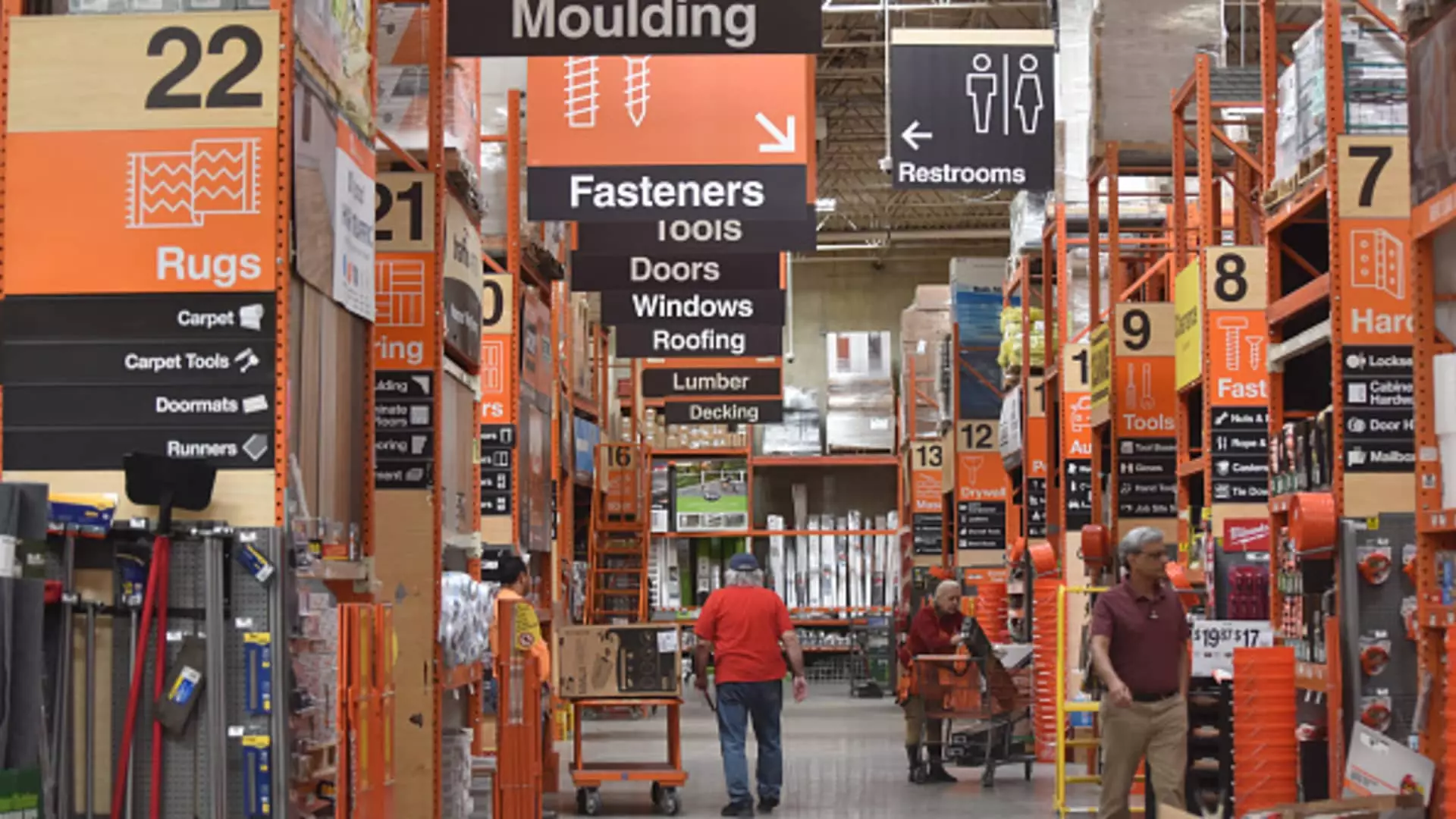Home Depot has recently reported its quarterly earnings for the period ending October 27, 2023, providing valuable insights into its financial health and market positioning. While challenges persist due to high interest rates and fluctuating economic conditions, the retailer shows signs of recovery as it heads toward 2025. This article examines Home Depot’s quarterly results, strategic adjustments, and the broader implications for investors and the home improvement market.
Home Depot recorded a 6.6% year-over-year increase in net sales, reaching $40.2 billion and surpassing the anticipated $39.3 billion, according to LSEG estimates. Despite this positive sales growth, adjusted earnings per share (EPS) saw a slight decline of 1.8%, landing at $3.78 per share—still exceeding the expected $3.64. This divergence between sales growth and EPS decline underscores the complexities of navigating the current economic climate for retailers. Moreover, the disappointing same-store sales figures, down by 1.3% overall and 1.2% in the U.S., indicate that consumer spending in the home improvement sector is still under pressure, although the outcomes were better than analysts had predicted.
Investors must be cautious in interpreting these results. The overall flat trading of Home Depot shares in the afternoon session suggests that market sentiment remains wary despite improved sales figures. The company has effectively adapted to external pressures, but the metrics around consumer spending reflect a broader malaise that may indicate longer-term challenges.
The significant impact of high interest rates and ongoing economic uncertainties cannot be overstated. Consumers are becoming increasingly cautious in their spending, particularly on larger remodeling projects, which have historically been lucrative for Home Depot. CEO Edward Decker noted some improvements in customer engagement with seasonal goods and outdoor projects as weather conditions stabilized, hinting at some potential recovery.
Furthermore, the company identified “green shoots” for larger renovation projects, particularly as home equity line of credit (HELOC) rates decline—a metric sensitive to Federal Reserve rate adjustments. This indicates a possible shift in consumer behavior, with homeowners feeling more secure about leveraging their home equity amid an easing borrowing environment.
Despite the challenges during the recent quarter, Home Depot’s management has raised its guidance for the remainder of the fiscal year, anticipating a 4% increase in total sales, which signals optimistic recovery. This upward revision from a previous estimate of 2.5% to 3.5% highlights the company’s confidence in its resilience and adaptability. The incorporation of SRS Distribution, acquired recently, also adds significant value, projected to contribute around $6.4 billion in incremental sales, thereby fortifying Home Depot’s market position.
The strategic adjustment in guidance also includes a more optimistic outlook for same-store sales—a decrease of 2.5%, revised from earlier estimates of 3% to 4%. This reflects an understanding of market trends and consumer preferences, positioning Home Depot to better meet the evolving demands of its customers.
As Home Depot looks toward the future, its combination of robust sales performance amidst challenging conditions and strategic acquisitions paints a picture of resilience. The upcoming year presents opportunities as the anticipation for potential Federal Reserve rate cuts could rejuvenate consumer confidence in the housing market, an essential driver for Home Depot’s core business.
Investors might find Home Depot’s recent sales increase and elevated guidance encouraging, suggesting a stabilizing trajectory in a usually volatile market. However, it is imperative to remain vigilant about any persistent economic headwinds that could impact consumer spending. As Home Depot navigates these complexities, its strategies and adaptations will be critical as they strive not just to survive but to thrive in the evolving landscape of home improvement retail.

